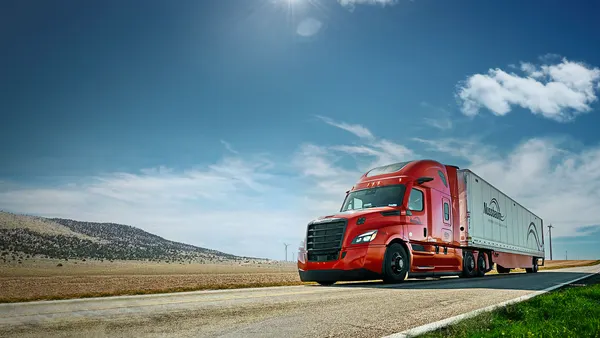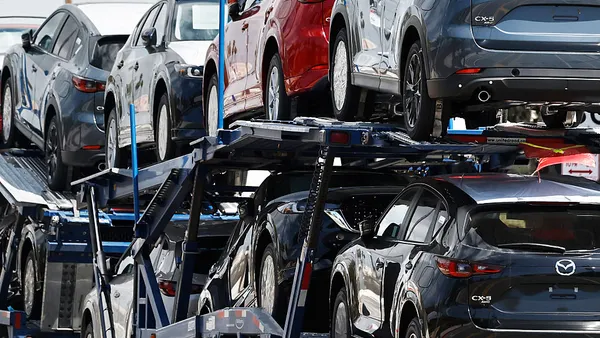Imagine this: A midsize dealership loses one of its longtime customers due to service delays, but they aren’t caused by staffing challenges or supply chain shortages. When you pull back the curtain, the root cause of these service delays can be traced to the accounting department. The accounting team, hampered by outdated accounting systems, relies on inefficient back-office operations, which can create a cascade of problems. Staff is overwhelmed with paperwork, convoluted approval processes, and constant scrambling to correct errors. Payment delays and invoice discrepancies pile up, causing issues that make it difficult to acquire parts and, in worst-case scenarios, drive vendors to part ways with the dealership. The result is an inability to service customers in a timely way.
The fallout doesn’t stop there. Outdated accounting systems also get in the way of strategic initiatives, such as scaling growth. Without accurate, real-time visibility into cash flow, planning for market expansion or new services becomes a risky gamble.
So, how do you avoid the kinds of cash flow delays and customer service problems that can erase your already-thin profitability? Here's how to protect your bottom line.
Why Trucking Dealerships Are Particularly Vulnerable
Outdated accounting practices can put companies from any industry at risk. But trucking dealerships are particularly vulnerable to these downsides. Here’s why:
- Complex revenue streams: Each department, from truck sales to parts and service, has its own unique billing and reporting needs. Most legacy systems weren’t built to handle this level of complexity, which increases the need for human intervention and the errors that often accompany it.
- Fleet customer expectations: Large customers rely on dealers to service their equipment quickly and effectively, which means you need the right parts on hand to make timely repairs. Dealerships that rely on manual accounting processes struggle to deliver these benefits, which makes it harder to retain enterprise clients.
- Manufacturer requirements: OEMs typically require timely, accurate payments and complete documentation to keep the supply chain running smoothly and without disruption. Manual errors and slow processes can delay these payments or force you to forfeit them entirely.
- Regulatory complexity: Trucking dealerships often face complex regulatory requirements, including multi-state sales tax and commercial credit. This makes errors expensive and auditing a more time-consuming process.
- Seasonal cash flow challenges: Busy seasons exacerbate the issues of manual accounting systems. You may face growing backlogs, which can lead to employees rushing to complete their work. This hurts customer service and, potentially, profitability.
The Competitive Advantages of Modern Accounting Systems
As you consider upgrading your accounting system, it’s also important to note the competitive advantages unlocked by modern platforms. These can help you unlock more value for clients, save time, and improve profitability.
Real-Time Financial Visibility
With all invoices tracked digitally, you can clearly monitor the status of every invoice in the pipeline. Managers will be able to track profitability in real time by department, customer type, or vehicle model. Instead of waiting for the monthly close, you can get the information you need to make intelligent decisions today.
Efficient, Automated Workflows
Modern platforms automate many aspects of the traditional back office. They can handle approvals, vendor matching, and even reconciliation. This speeds up the billing cycle, helping your dealership make payments sooner and improve its cash flow in the process.
Since parts availability and service turnaround times directly impact customer satisfaction, faster processing also means quicker restocking, better vendor relationships, and fewer delays in the service lane. Automation ensures your team spends less time chasing paperwork and more time supporting operations that keep trucks on the road.
Stronger Defense Against Fraud
Modern accounting systems are also key to reducing financial fraud, a growing risk in high-volume environments. With built-in anomaly detection, audit trails, and automated controls, these platforms can flag suspicious activity before it becomes a costly problem. By eliminating manual processes and duplicate data entry, you minimize opportunities for error and manipulation, helping your finance team stay one step ahead of potential threats.
Improved Customer Experience and Better Vendor Relationships
A new platform can also help you deliver a better customer experience. You’ll be able to offer online payments, invoice portals, and digital service histories to give clients access to more of what they need. This improves satisfaction and boosts retention.
For truck dealerships, where speed and uptime are critical, giving customers quicker access to billing and service records can reduce downtime and strengthen trust. On the vendor side, streamlined payment processes can help secure favorable terms and priority access to in-demand parts, creating a major advantage when inventory is tight
Better Decision Making
All of these benefits add up to more free time for your finance team. That gives them more hours to focus on strategy, find solutions to complex problems, and position your dealership to thrive.
Improved Team Morale
By eliminating tedious manual tasks and reducing error correction, finance teams are freed to focus on more strategic, rewarding work. This means spending less time buried in parts invoices and reconciliations, and more time contributing to high-impact decisions. Plus, working with cutting-edge tools gives team members valuable experience with technologies shaping the future of finance, which is a win for their careers and your dealership.
The True Cost of Inaction
Manual accounting isn’t just inefficient. It’s also a threat to profitability and strategic growth for truck dealerships. You can protect your bottom line, build stronger vendor and client relationships, and set the foundation for smart scalability by upgrading to a modern alternative. Begin with a system assessment, train your team, and track progress with clear metrics. There’s no time like the present to start up your engine, evaluate your current system, and chart the course to modernization.










